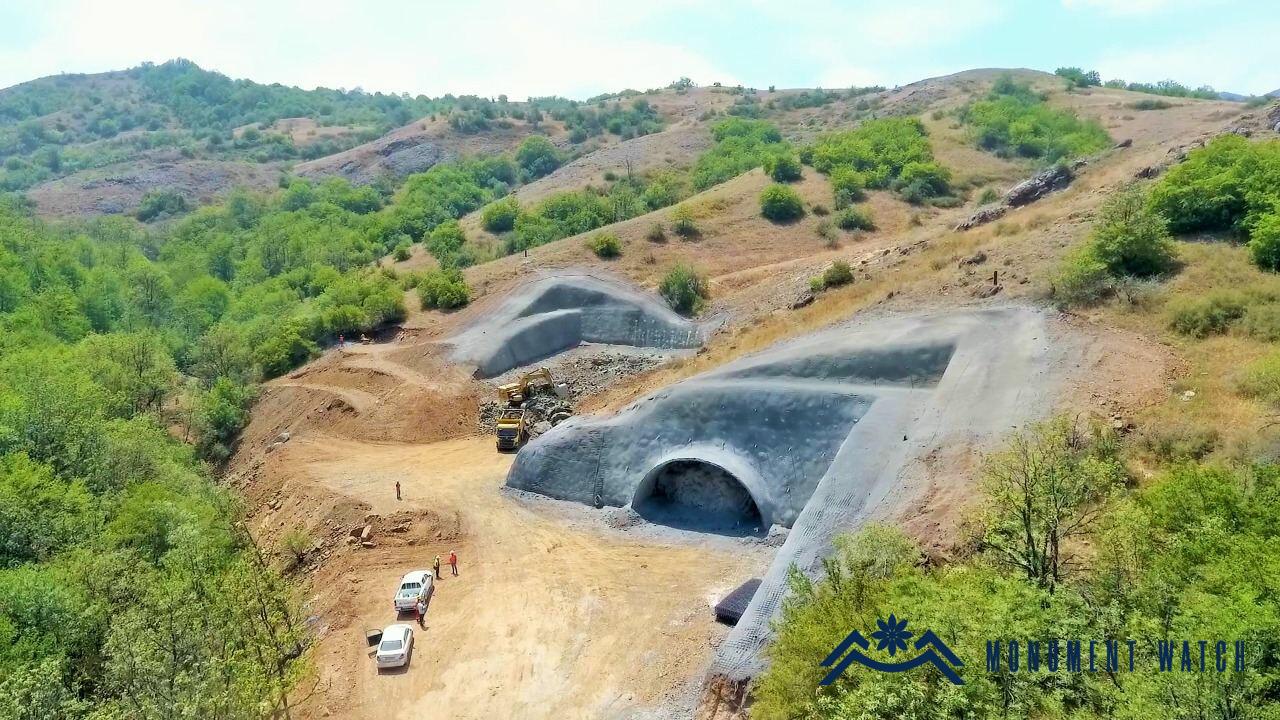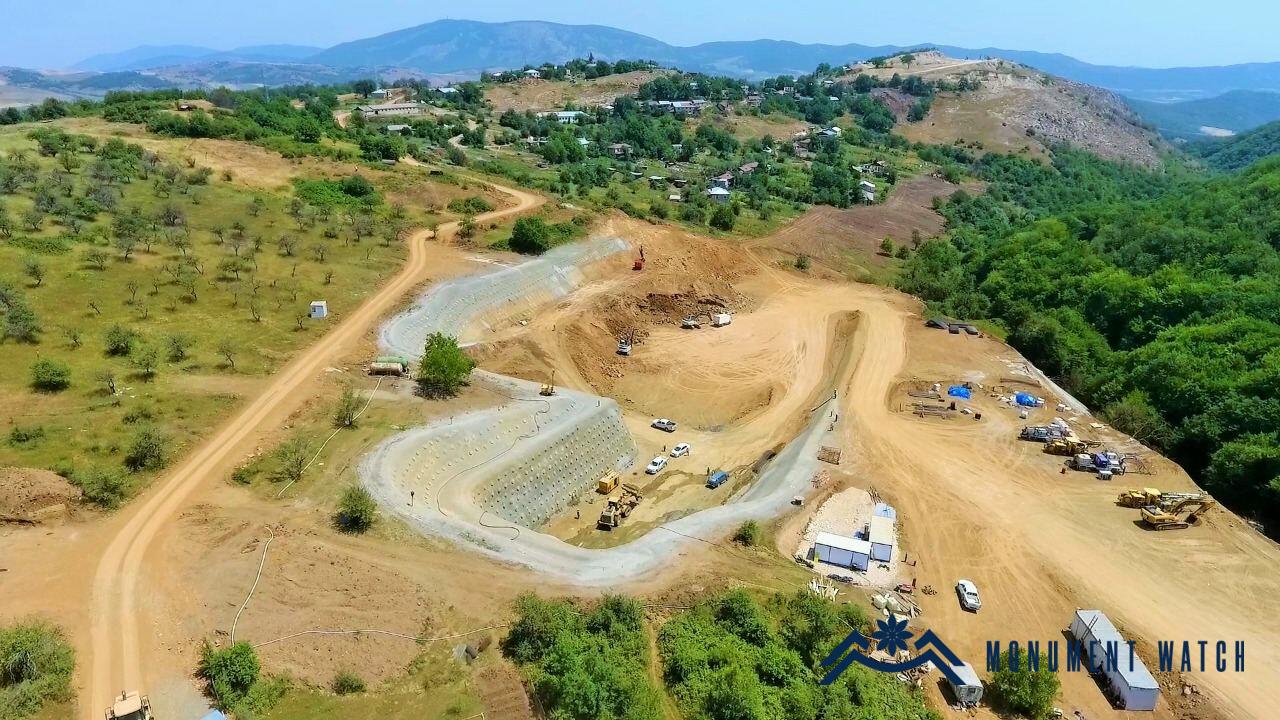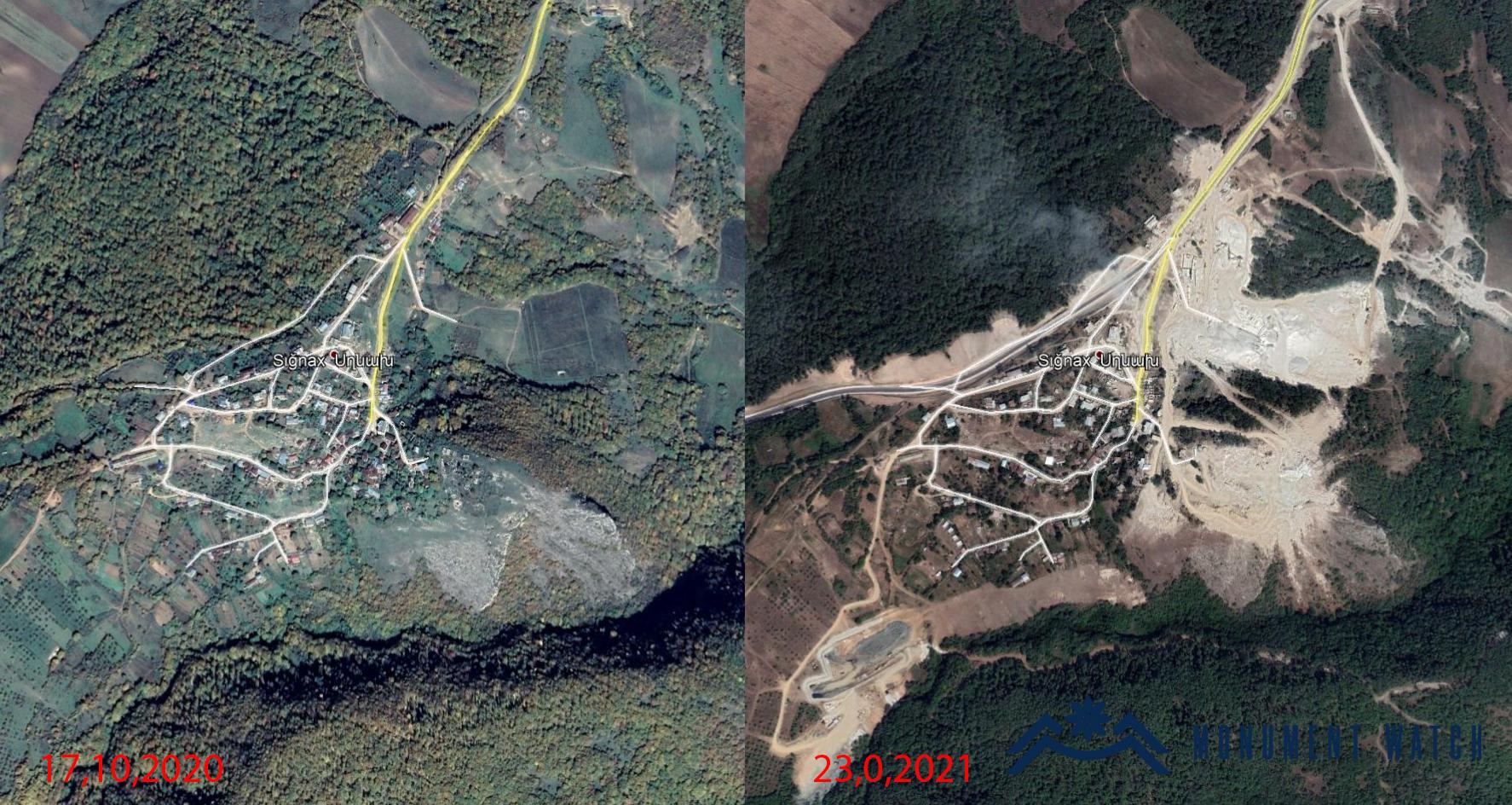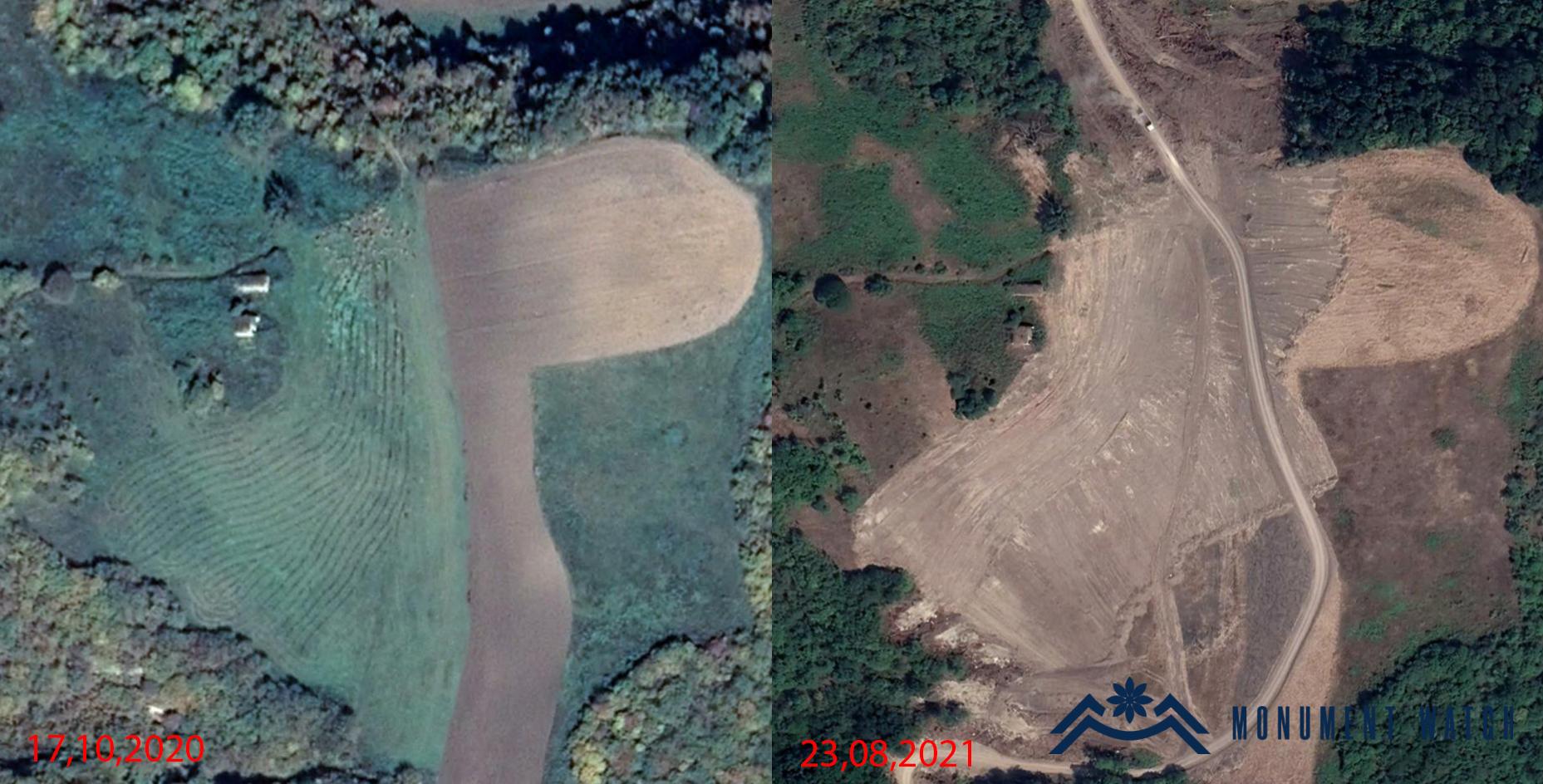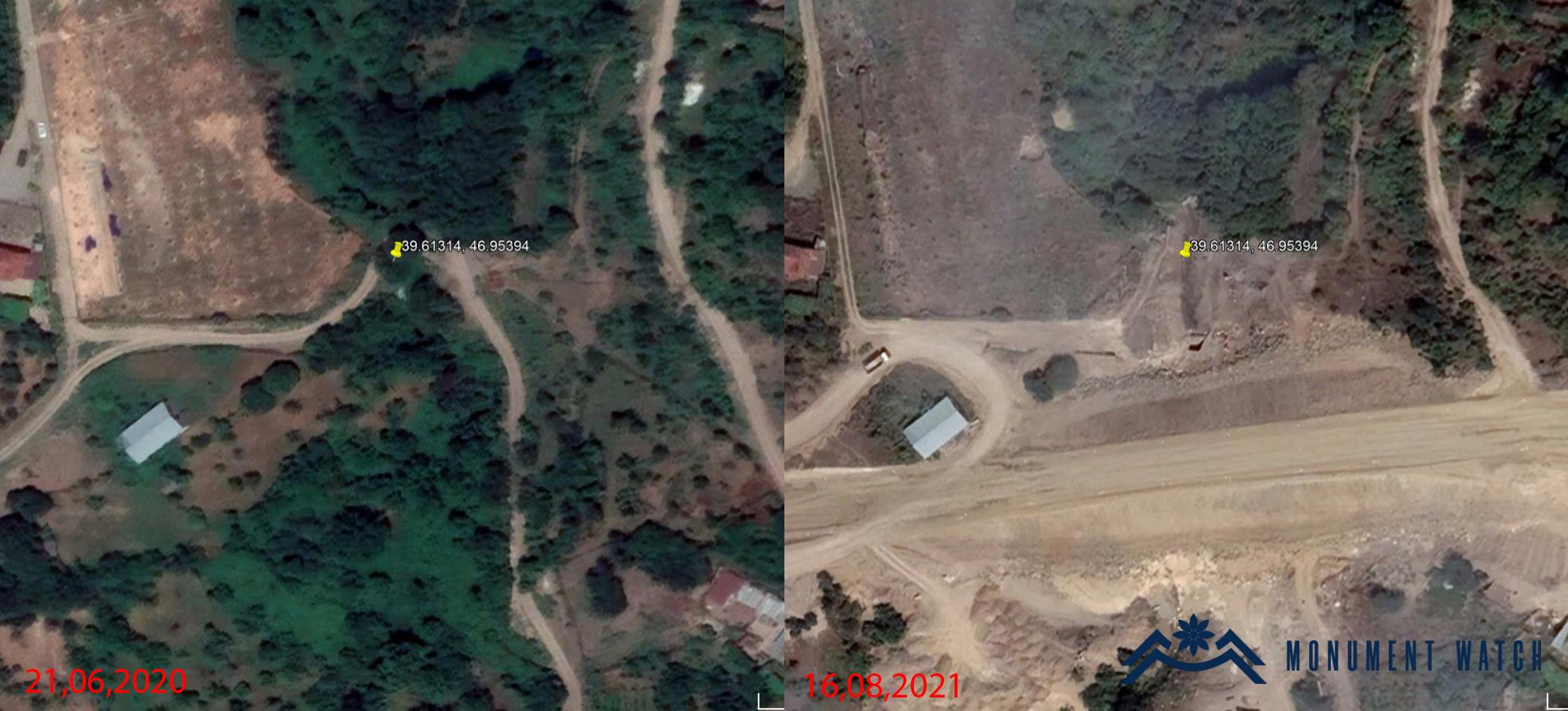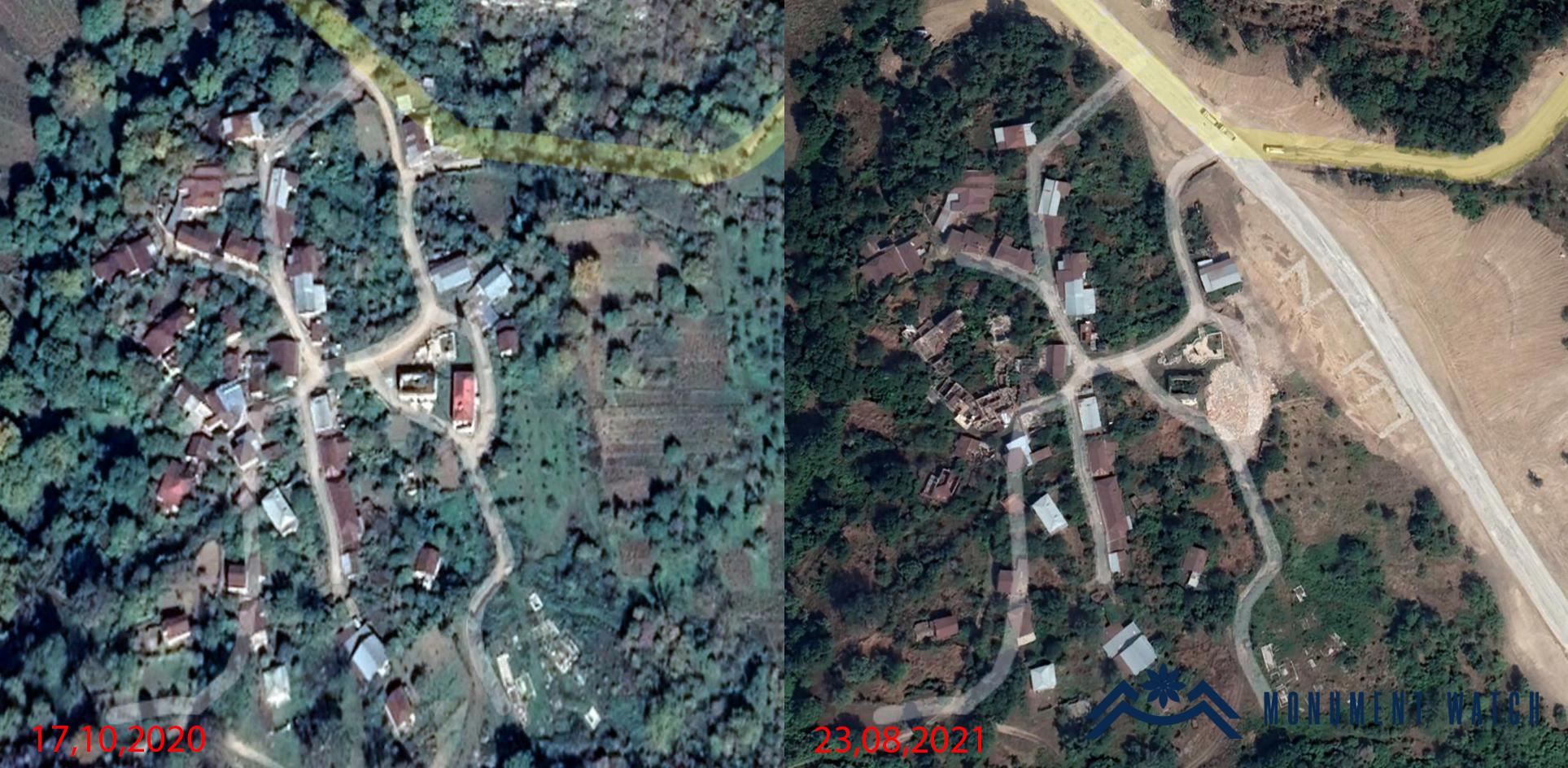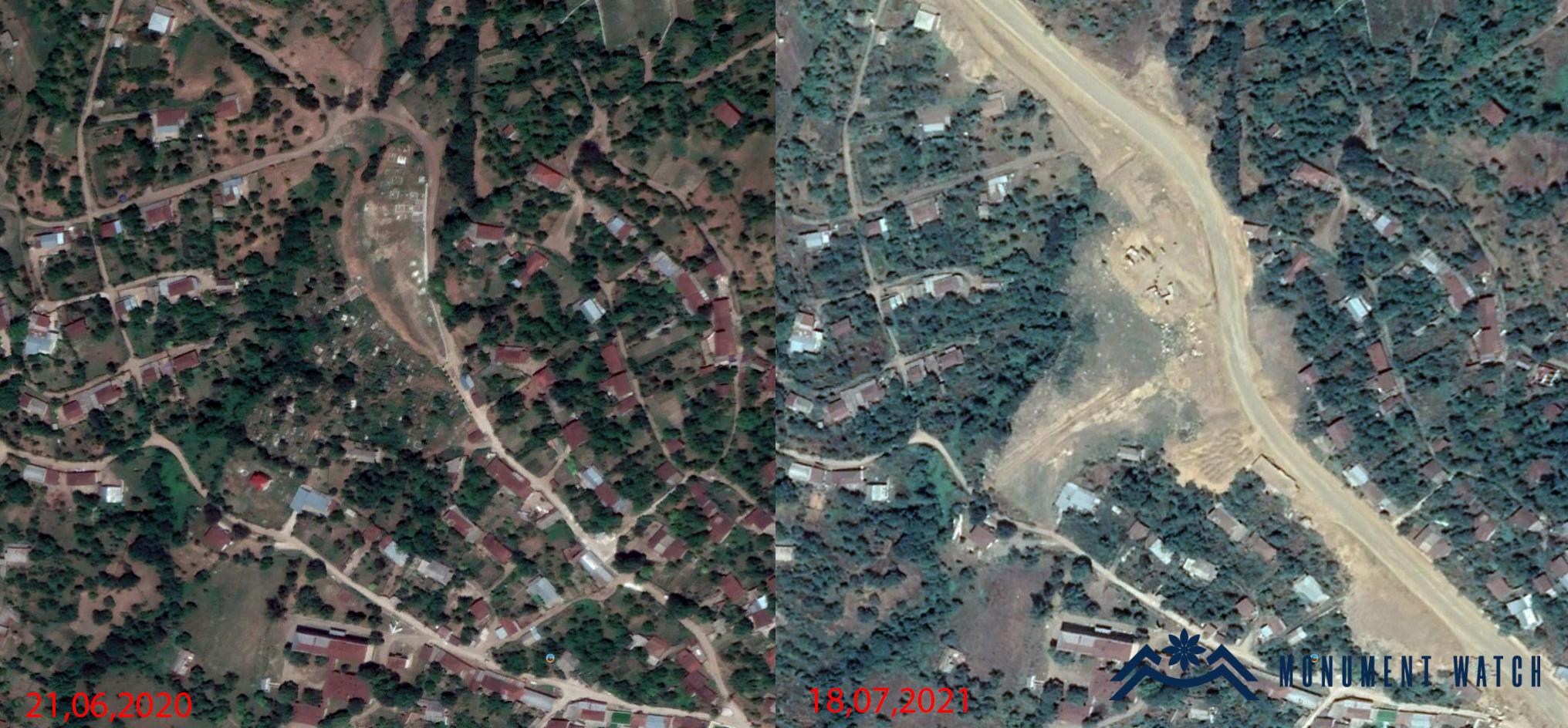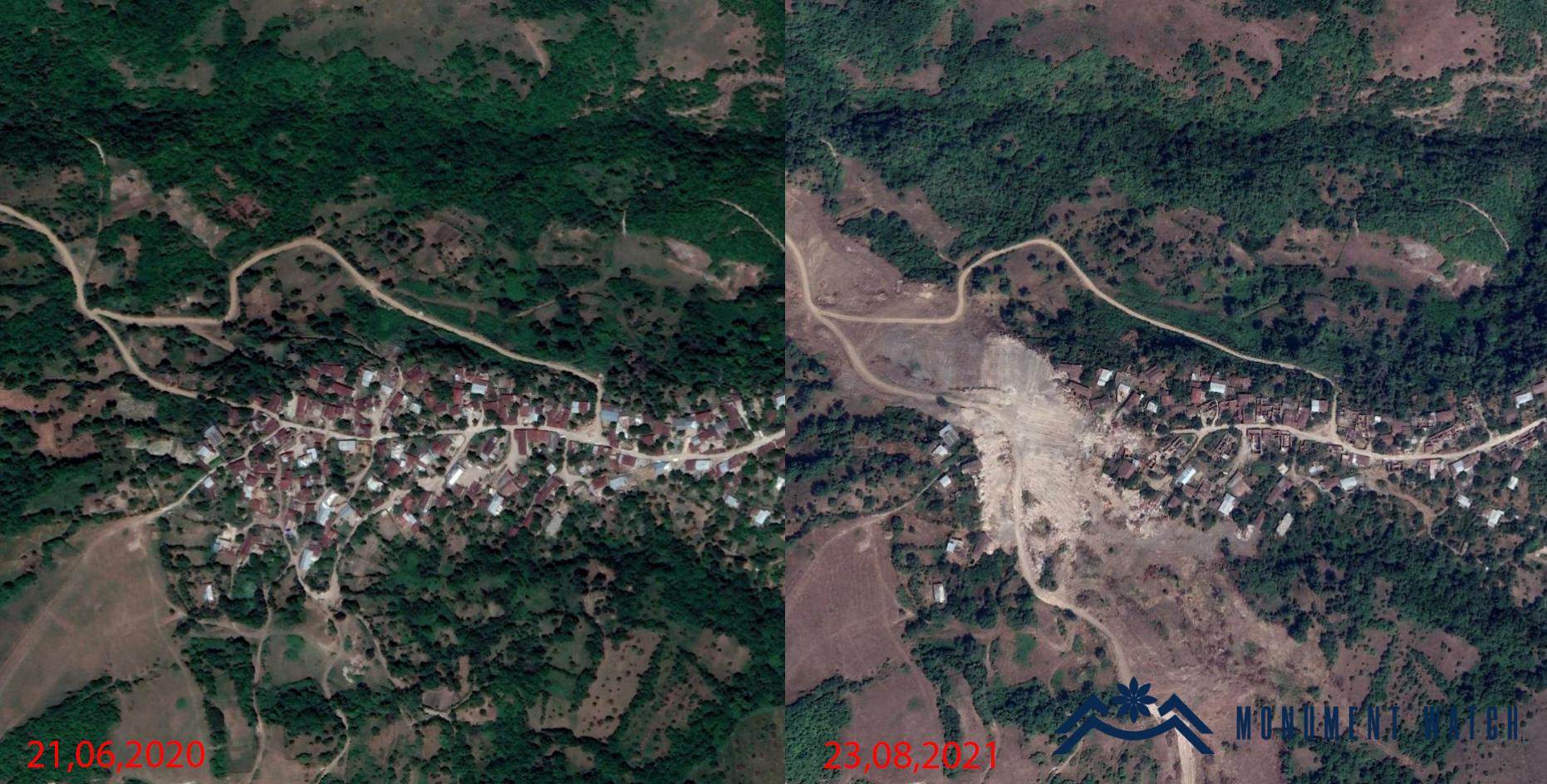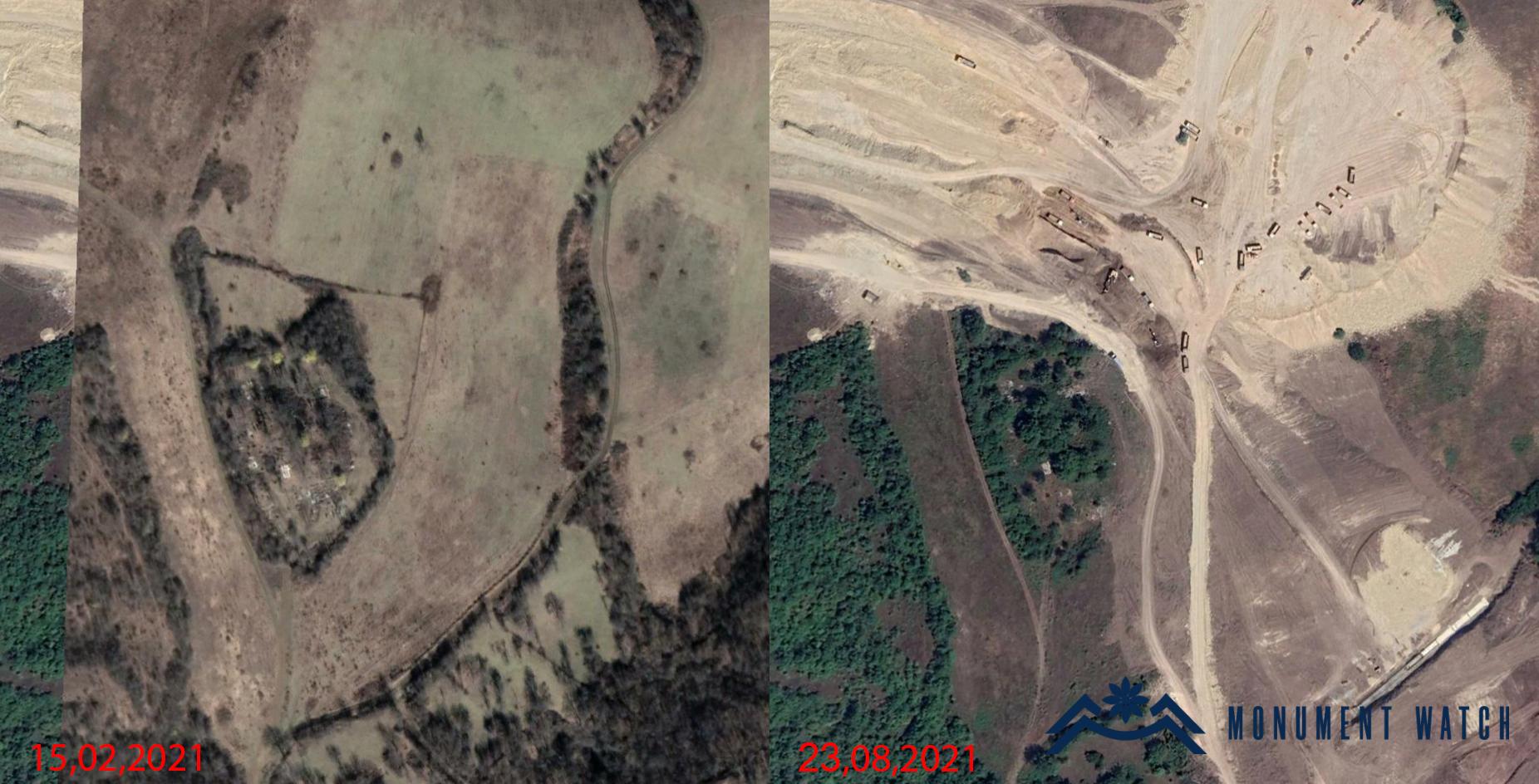“The roads of Azerbaijan” and threats to the Armenian Cultural Heritage
Almost immediately after the end of the 44-day war in 2020, Azerbaijan began the implementation of two large-scale projects for the construction of roads in the occupied territories of Artsakh. The main goal is to create an infrastructure and highways leading to Shushi.
One of the planned highways also has a symbolic meaning for Azerbaijan. That was called the "The Victory Road" for a specific reason: according to the Azerbaijani side, it is being constructed to perpetuate the path trodden by the Armed Forces of Azerbaijan for the "liberation" of Shushi. The name was given by Ilham Aliyev, and the foundation was laid on November 16, 2020. According to the Azerbaijani side, the new route will connect Baku with Shushi will bypass the territories controlled by the Russian peacekeepers and Armenians.
According to the news spread by Azerbaijani news portals, the Victory Road should connect the Fizuli region via its capital with Shushi. This highway will be 101.5 km long and will pass through 20 settlements, including the villages of Tokh, Mets Tagher, Avetaranots, Sygnakh, Karin, etc. (these names are mentioned in the report on the road construction).
In parallel with the construction of this road, Azerbaijan is also building another one, which will intersect with the Victory Road in some sections. If the Victory Road is a two-lane road, the second one will be a six-lane highway. The construction is carried out by Azerbaijani companies (subordinate to the State Agency for Roads of Azerbaijan) and Turkish companies with extensive experience in performing complex road construction works (Azvirt, "KOLIN" İnşaat Turizm San, еtc.).
These two road construction projects pose the threat to monuments in the occupied territories of Artsakh, since the Azerbaijani side is carrying out enormous earthworks depending on the construction plans and including various works on the landscape and relief modification. In particular, a huge number of trees are being cut down, works on leveling and expanding the territory and blasting operations are being carried out, all structures and buildings that create a barrier or pose any threat to construction are demolished.
It should be noted that all the monuments located next to the planned highways are endangered. For example, Tukhnakal mansion located near Moshkhmkhat village, Surb Astvatsatsin church in Madatashen village, the cemetery and the Bridge of Avetaranots, the Bridge of Taghis built on the Ishkhanaget river near Mets Tagher village are in danger. The memorial complex in Azokh village, dedicated to the victims of the World War II, the First Artsakh War and the Armenian Genocide, is already destroyed.
Large underground tunnels are under construction on the territory of Sygnakh village. The destruction of the cemetery of Sygnakh is one of the examples of the removal of obstacles preventing construction. The territories in the northwest of Mets Tager village and the Makun Bridge were destroyed and leveled.
According to the official Azerbaijani sources, the Victory Road is the first to introduce into service and is expected to open in autumn.
Our response
In response to the destruction of Armenian historical settlements by Azerbaijan, it is worth recalling that According to The Hague Convention of 1954 for the Protection of Cultural Property in the Event of Armed Conflict the harm caused to the cultural values of any of the peoples is threat to the cultural heritage of all mankind, because each nation makes contribution to the diversity of the world's cultures.
The 4th article of the Convention notes that the parties are obliged to respect cultural properties situated within their own territory as well as within the territory of other parties. It is forbidden to use these values for such purposes that may cause the destruction or damage of these values in the event of armed conflict, and the parties should refrain from any manifestation of hostility towards those.
The parties undertake to prohibit, prevent and, if necessary, put a stop to any form of theft, pillage or misappropriation of, and any acts of vandalism directed against, cultural property.
According to the first protocol of the 1954 Hague Convention, it is forbidden to destroy cultural or spiritual values in the occupied territory.
The Second Hague Protocol of 1999 also ratifies that requirement and prohibits any act of hostility and retaliation against inheritance, which is classified as an international crime by Article 15.
Destruction of cultural property is prohibited by the Geneva Convention of August 12, 1949 for the Protection of War Victims, on the Laws and Customs of War, by four International conventions and protocols, and the relevant UN resolutions and treaties on the protection of human rights.
